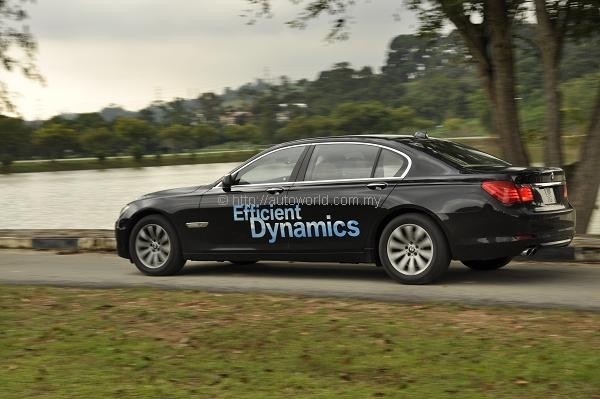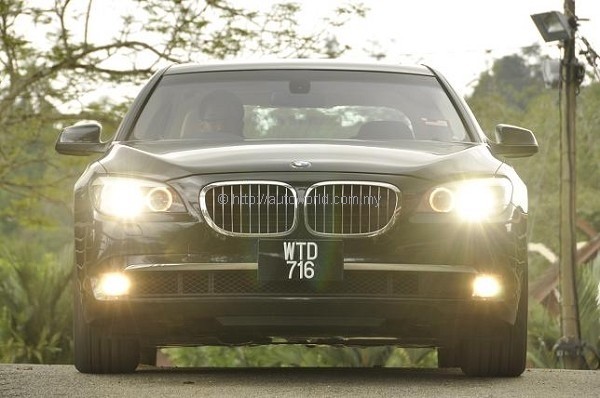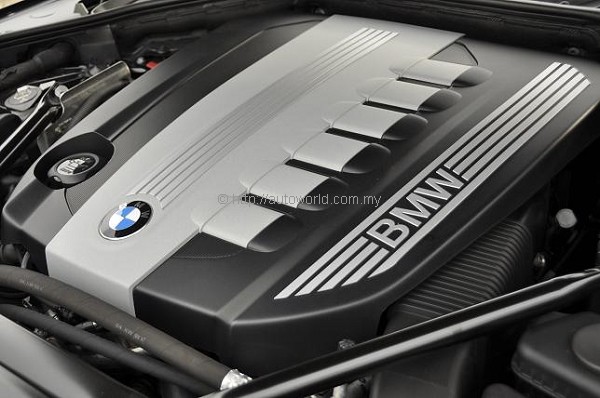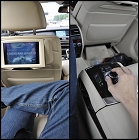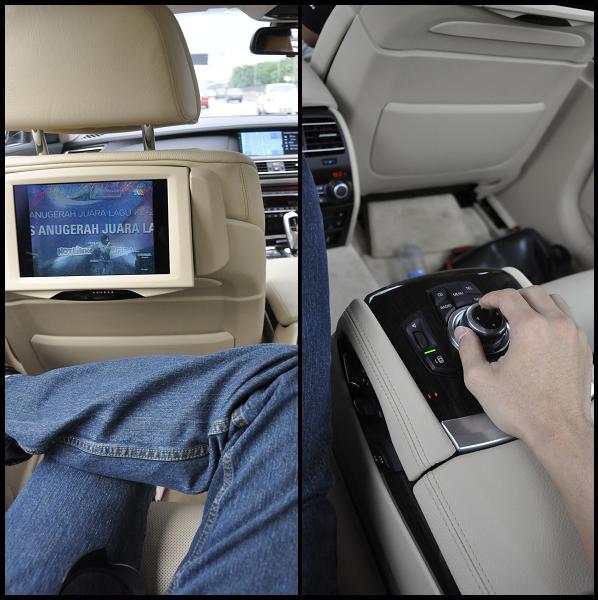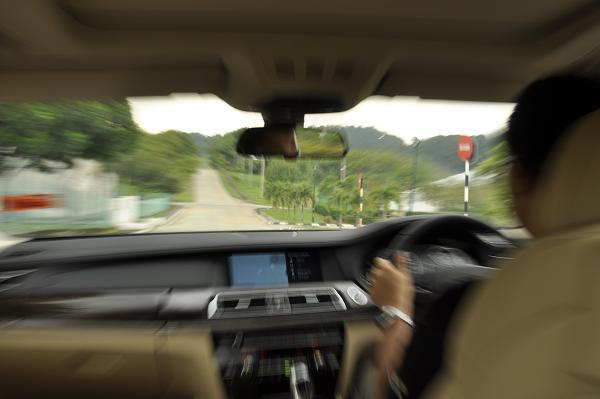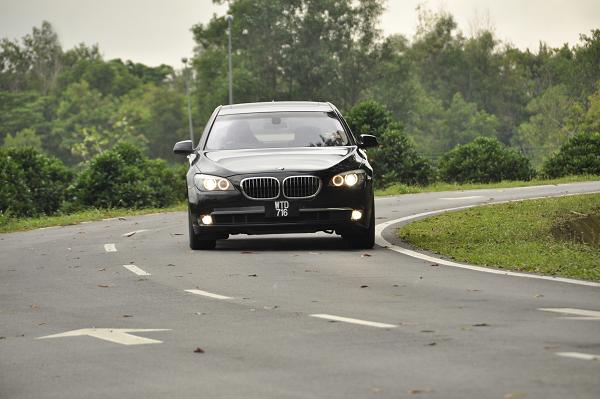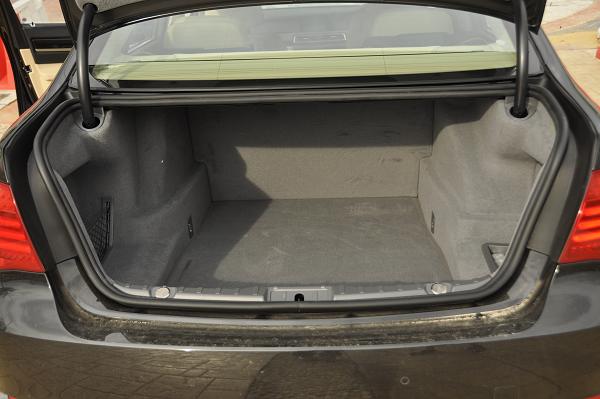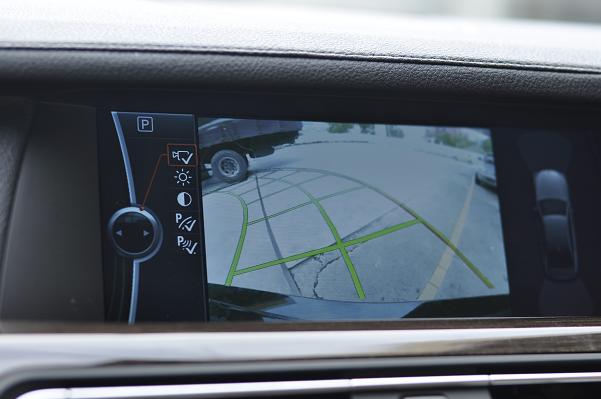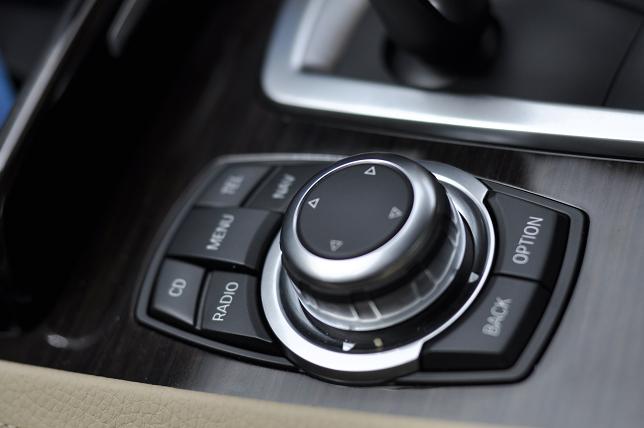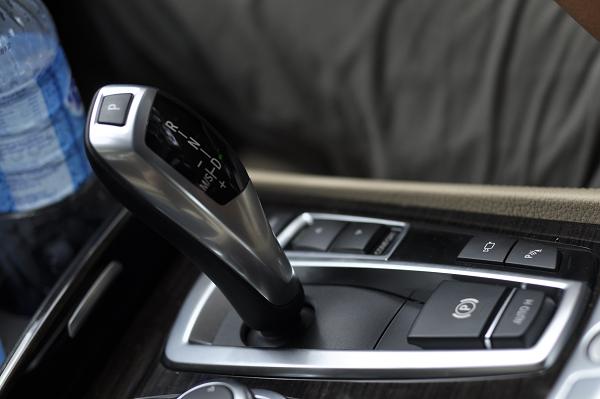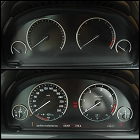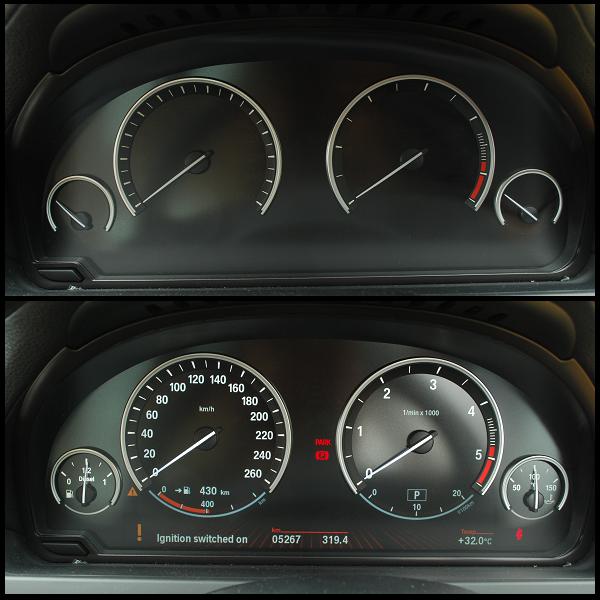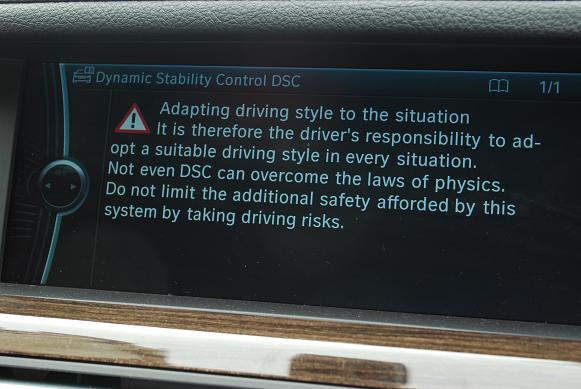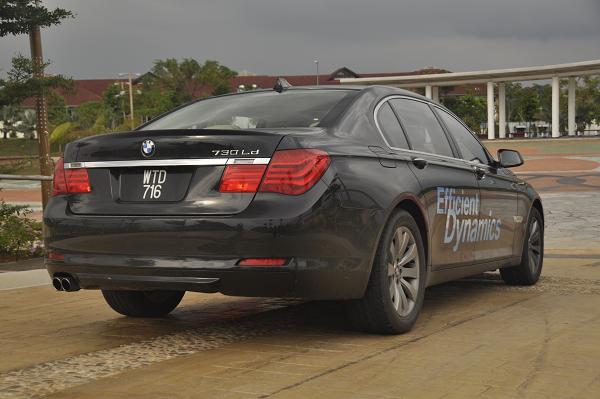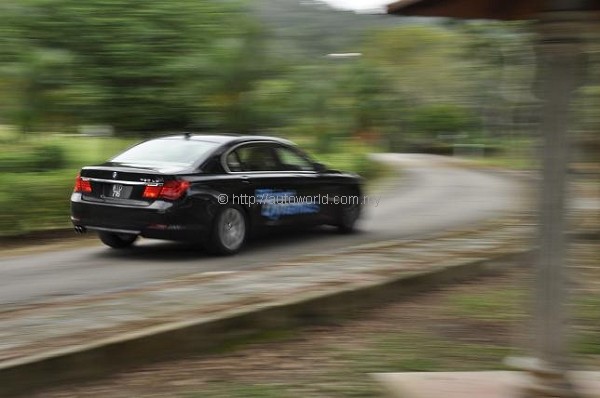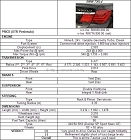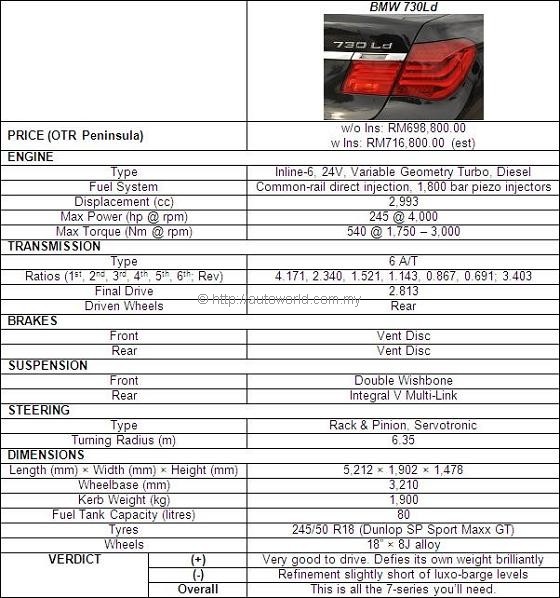BMW 730Ld: Oil burning barnstormer
When BMW launched the current generation 7-series for Malaysia a year ago, they brought only the petrol variants in long wheelbase guise – the 740Li and 750Li. At that time, BMW reps were mentioning the possibility of bringing in the 730d as well, though I was doubtful. Diesels, for all their recent advancements, do not sell in Malaysia, especially not when our pumps still sell stone age fuel.
But arrive it did, the 730Ld, together with a trio of bridesmaids in the form of the 320d, 520d and X3-20d, as BMW shook the market with the simultaneous launch of four Advanced Diesel models in October 2009. This is certainly no half-baked attempt by the Bavarians in their quest to convert us all into the fellowship of oil burners.
For petrol-loving Malaysia, a car like the 730Ld is the perfect platform to induce a paradigm shift of our market in the favour of diesel technology. If a luxury carmaker like BMW sees it fit to have a diesel engine powering its flagship model, there certainly couldn’t be much wrong with the technology. It doesn’t matter if the 730Ld does not sell in numbers. It’s role is simply to demonstrate how diesel can be taken as a viable alternative to petrol.
The Test Car
As tested, the demo car loaned to us from BMW Malaysia is kitted equivalent to SE spec level. Unlike the 740Li and 750Li, both shipped here all the way from Dingolfing, Germany, the 730Ld arrives from Thailand – accounting for slight differences in trim compared to the petrol variants, and also explaining why it is significantly cheaper than the RM850k 740Li as well.
This now makes the 730Ld the entry-level 7-series in Malaysia, though I’m sure you understand that entry-level here hardly equals cheap. BMW Malaysia’s asking price for the 730Ld comes at RM698,800.00 on the road excluding insurance. Based on estimates from our insurance calculator, the purchase of one is set to burn a RM716k hole in your bank account.
Inside Out
From the outside, little differences separate the 730Ld from its petrol-powered brethren. There is that ‘730Ld’ badge, for starters. The integrated exhaust vents of the petrol variants are then replaced by twin tailpipes on the left side, while rims, upsized for the 740Li and 750Li, are now of the standard 18″ x 8J size shod in 245/50 Dunlop SP Sport Maxx GT tyres.
Inside, the 730Ld features almost identical levels of equipment to the 740Li. This means individual adjusting rear seats for two at the back, quad-zone climate control, an LCD screen each for both rear passengers, black panel instrument display, and the vastly improved second generation iDrive.
However, where rear passengers of the 740Li access the iDrive by a remote control, the 730Ld gets a built-in interface integrated to the central armrest. Certainly a neater solution doing away with the fiddly remote, which has a very real chance of going missing.
One item that is omitted for the 730Ld is the separate air-con compressor for rear passengers, which gave the 740Li and 750Li an awkward L-shaped bootspace. Once again, this is an omission of the positive kind, as it frees up more usable storage space in the trunk.
The F01 7-series is huge. It’s 1,902mm wide and 1,478mm tall, measuring a gargantuan 5,072mm from stem to stern, with a wheelbase of 3,070mm. In Malaysia, we don’t get the F01. What we get is the long wheelbase F02, which is of the same width and height, but 14cm longer – its wheelbase now stretches to 3,210mm, and its length at 5,212mm.
What this all translates to, of course, for the rear seating towkays, is enough space to match what they get on business class flights. Indeed, with the fully adjustable individual seats complete with all the bells and whistles, the 7-series makes most airlines feeling distinctly inferior and obsolete.
Further enhancing the cabin’s airiness and spaciousness is the two-tone black & beige interior finish. I much prefer this in comparison to the alternative all-black interior, though the flip side is that beige stains rather easily. Another issue, from an Asian perspective at least, is that the rear seats are mounted a little too high up off the floor pan which means smaller sized adults sit with their feet dangling.
Up front, it’s all about the driver. The dashboard is typical BMW interior architecture, being slightly angled at the driver’s direction. Controls are well-laid out, with the new generation iDrive being sufficiently easy and intuitive to use, much improved over iDrive Mark 1.
There are a plethora of features in the 7-series, but none proved as useful as the reverse camera, which made reverse parking this behemoth lot easier than it should. It activates the moment you slot into reverse, and guiding lines, which move as you turn the steering, appear on the screen to help you aim the car’s direction.
Of course, if you buy a 7-series, you’re unlikely to drive it yourself. In the event you do, you’re also likely to valet park. But, in the off chance that you decide to do the parking yourself, rest assured that it’s easy as kacang. I negotiated several multi-storey car parks without much issue. The biggest irony is that only BMW Malaysia HQ’s own car park gave me any problems in maneuvering. Radar sensors all-round allow you to navigate through the tightest of gaps with utmost confidence.
On the Move
To be sure, the 730Ld, despite being immensely well-engineered, is not a car without faults. But whatever shortcomings it might have, you can be sure that the 3.0-litre N57 D30 straight six turbodiesel has nothing to do with it.
Displacing 2,993cc, the all-aluminium powerplant is force-fed by a single variable geometry turbo to produce 245hp @ 4,000rpm and 540Nm @ 1,750 – 3,000rpm. We didn’t test BMW’s claims of a 7.3 second century sprint, but believe me, if they were bluffing, it wouldn’t have been by much.
The way this thing accelerates, you really wouldn’t believe that it tips the scales at a massive two tonnes. And, it’s not just how it accelerates; it changes direction just as readily, cornering twice as well compared to most sedans half its weight. Yes, there is some body roll, but bear in mind you are actually throwing almost two tonnes of metal about. A degree of body roll is acceptable, considering how the four tyres seem magnetized to the tarmac as you hammer the throttle along bends.
Adding different dimensions to the 7-series’ character is the Dynamic Driving Control, which features four distinct driving modes, each with varying gear shifting maps, steering assistance, throttle response and all the other driving electronics onboard. The four modes being Comfort, Normal, Sport, and Sport+.
Comfort is the mode of choice for ferrying passengers. Here, the car uses a more gentle throttle mapping, with the dampers softening up to give a more cushy ride. Road undulations are well-filtered, but results in a greater tendency to nose-dive under hard braking. Shakes from potholes still make their way into the cabin, so it isn’t a magic carpet ride by any means.
On my own, my preference varied between Normal, which is middle ground, and the harder Sport setting depending on conditions. Things noticeably harden up in Sport, as the suspension is now focused on eliminating body roll more than road undulations. Throttle and kickdown response also becomes snappier, as the car eggs you to drive it harder, while returning an impressive 10.5 litres/100km, well within Japanese C-segment consumption territory.
At speed, the 730Ld is immensely refined and well-behaved. The N57 up front, paired with the excellent ZF-sourced 6-speed automatic transmission, is silky smooth and super quiet, but ever ready to explode with 540Nm burbling under your right foot. The F10 5-series may have pioneered an 8-speed automatic transmission, which is sure to go into the 7 come facelift time, but you really have to wonder if that is even necessary when the ZF 6-speeder is already this good.
Road noise was very well-suppressed, though the same could not be said of wind noise. Above 140kph, air flow around the A-pillars were especially audible. It wasn’t deafening by any means, but when more than RM700k is being shelled out, standards rise accordingly. Let’s just say that the facelift team has work to do on the 7’s aerodynamics.
The Final Say
There is very little wrong about the way the 7 drives, and you would expect that from a BMW. It was astonishing how the car seemed to make light work of its own weight. Yes, you feel the bulk occasionally, but most of the time the entire mass seems to just shrink around you hustle the car around.
You can hardly find faults in this car from the driver’s seat. Which then brings us to the question, how many buyers of a BMW 7-series, long wheelbase variants no less, drive the car themselves? Even if they do, how often? For a car like this, most owners tend to occupy the back seat.
The crucial verdict for this car comes from the rear, where there is admittedly little wrong either, until you get moving. Audible intrusion of wind noise removed some polish from what is otherwise a very well-insulated interior. Another slight issue is the ride, which is still a little too biased in the direction of stiffness, even in Comfort mode, for a limo.
From an engineering perspective, the 7-series, whichever variant you look at, is an impressive piece of work. It is not perfect, but it is a worthy flagship of the BMW range. Despite being the lowest priced variant of the 7-series range in our shores, the 730Ld is by no means the most inferior. If you can wrap your head around the idea of buying a car costing as much as a house, the 730Ld is all the 7-series you actually need.
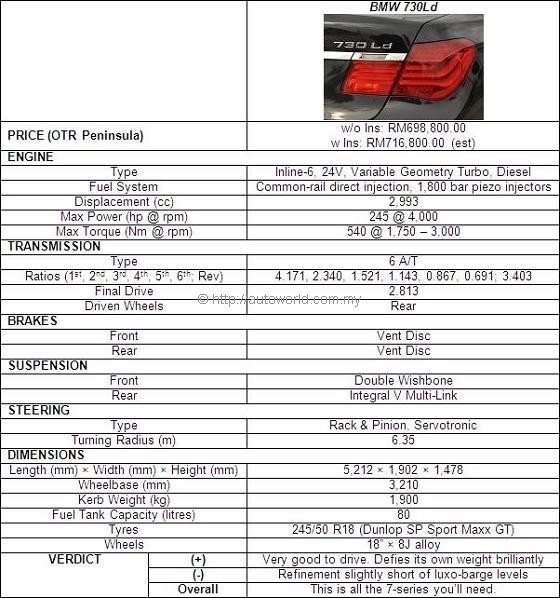 |
| Â |
Photography by: Trius Blades




